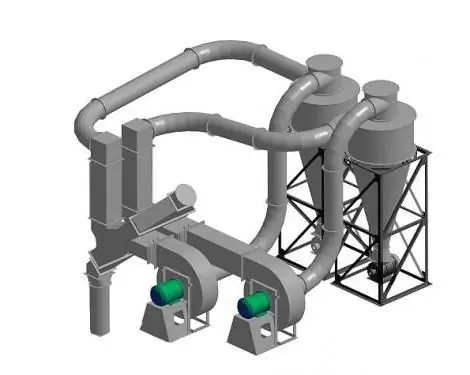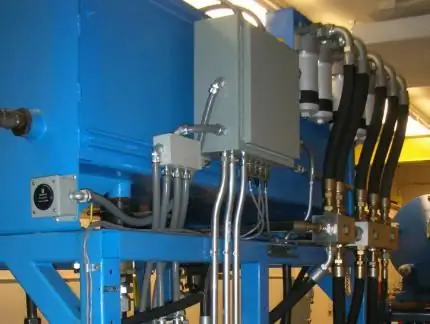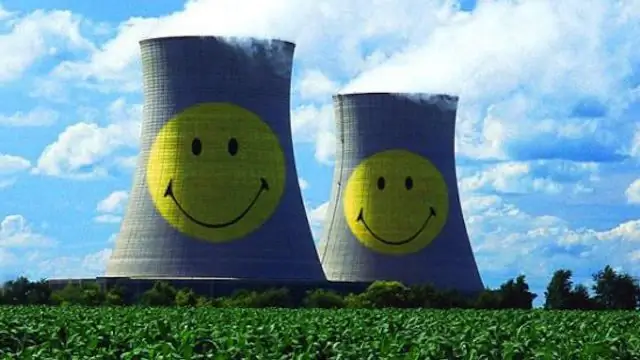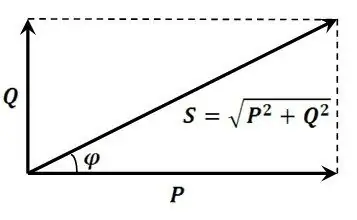2026 Author: Howard Calhoun | [email protected]. Last modified: 2025-01-24 13:10:29
Without power lines, a technocratic landscape is inconceivable. This web of humanity has entwined the whole world. A power line is one of the elements of electrical systems that transmits energy through current. According to the method of transportation, they distinguish

cable and overhead power lines. The first are hidden from human eyes, the second we see every day, leaving the house. In the context of dynamically developing civil and industrial construction, the number of power line systems is increasing every year. The demands on them in terms of throughput and security are also increasing, as the loads on intersystem components increase. Power lines are also used to transmit information using high-frequency signals. 60 HF and FOCL channels are used on the territory of the former USSR.
Construction of power transmission lines is a complex engineering task that includes the following processes: design, installation, commissioning and maintenance. Power lines are distinguished by the nature of the current: direct and variable. By appointment: distribution,

trunk, ultra-long (as a rule, high-voltage power lines) and consumer (below 20 kV). By voltage: low, medium, high, ultra-high and ultra-high. The highest voltage transmission line is the Ekibastuz-Kokchetav line (1150 kV). According to the mode of operation of neutrals: isolated, compensated, effectively grounded, deafly grounded. By power transmission modes: normal, emergency or installation.
The first experiment on the formation of power lines was carried out back in the 19th century. Russian engineer Fyodor Pirotsky used iron rails in 1874

roads for transmitting current over a distance. On one rail, the current went in one direction, on the second - it returned. The experiment had a positive result, and for several years a carriage ran along the route. But several pedestrians received electric shocks, and the project was closed. By the way, the experiment was not in vain - today's metro operates exactly on this principle.
In those years, scientists around the world were busy developing various ways to transmit current over long distances. The most effective system was proposed and created by the Russian inventor Mikhail Dolivo-Dobrovolsky. In 1891, under his leadership, the first three-phase current line was built over a distance of 170 kilometers. Energy losses decreased by a quarter. At the International Electrotechnical Exhibition in Germany, scientists around the world recognized that the problem had been solved. Petersburg, the Electrotechnical Institute was opened, whichdeveloped the Russian electrification system and trained specialists.
Initially, Russia did not have its own industrial base for the country's electrification - wires were brought from abroad, and supports were made from improvised material - wood. During the First World War, revolution and civil war, the construction of power lines was suspended. And since 1923, students of Mikhail Dolivo-Dobrovolsky, who remained in Russia, continued the work of their teacher.
Recommended:
Hydraulic system: calculation, scheme, device. Types of hydraulic systems. Repair. Hydraulic and pneumatic systems

The hydraulic system is a special device that works on the principle of a liquid lever. Such units are used in the braking systems of cars, in loading and unloading, agricultural machinery and even in the aircraft industry
Aspiration systems: calculation, installation. Production of aspiration systems

Aspiration systems are systems that are designed to purify the air. The use of these installations is mandatory at all industrial enterprises that are characterized by harmful emissions into the atmosphere
Power supply system: design, installation, operation. Autonomous power supply systems

Improving the quality of maintenance of buildings and industrial complexes has led to the widespread use of electricity sources and related infrastructure
Nuclear power plants. Nuclear power plants of Ukraine. Nuclear power plants in Russia

Modern energy needs of mankind are growing at a gigantic pace. Its consumption for lighting cities, for industrial and other needs of the national economy is increasing. Accordingly, more and more soot from burning coal and fuel oil is emitted into the atmosphere, and the greenhouse effect increases. In addition, there has been more and more talk in recent years about the introduction of electric vehicles, which will also contribute to the increase in electricity consumption
What is reactive power? Reactive power compensation. Reactive power calculation

In real production conditions, reactive power of an inductive nature prevails. The enterprises install not one electric meter, but two, one of which is active. And for the overexpenditure of energy “chased” in vain through power lines, the relevant authorities are mercilessly fined

